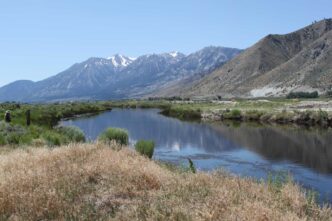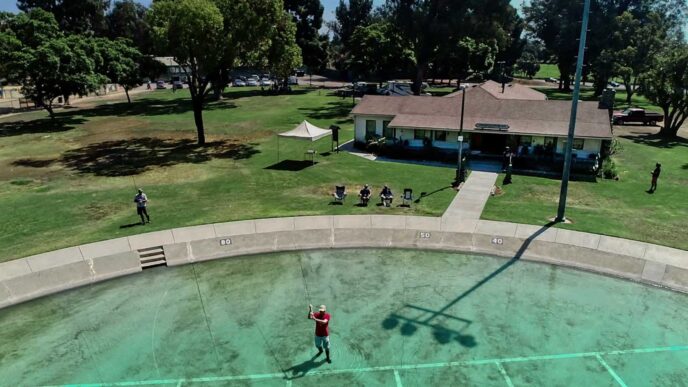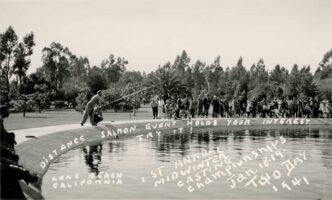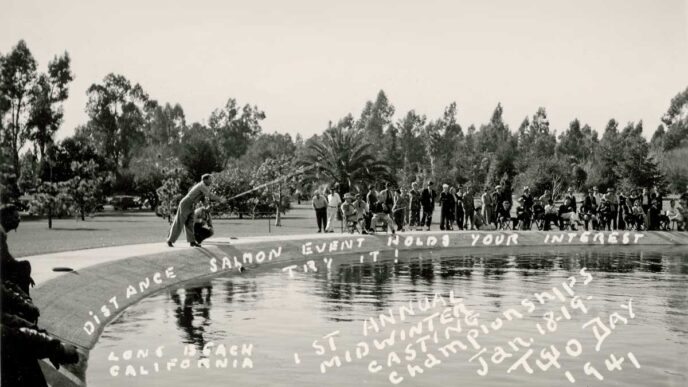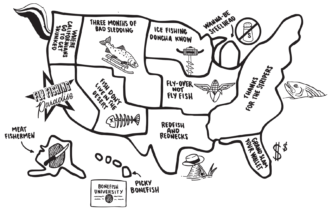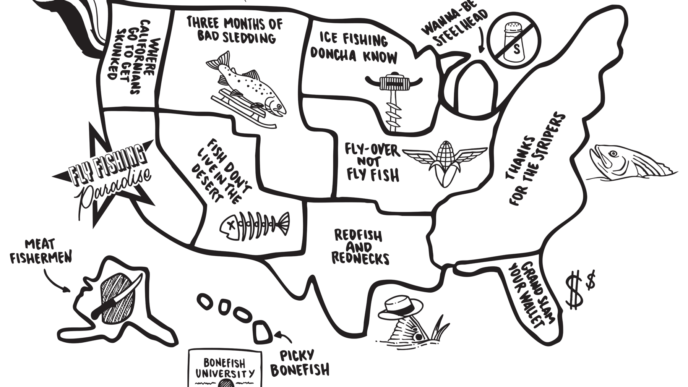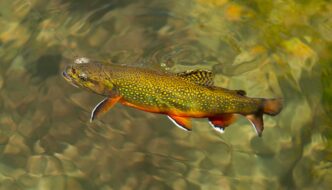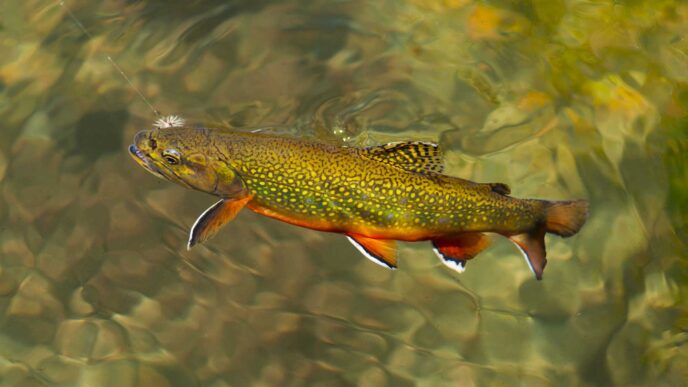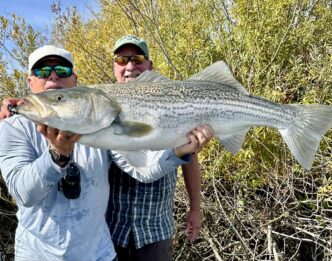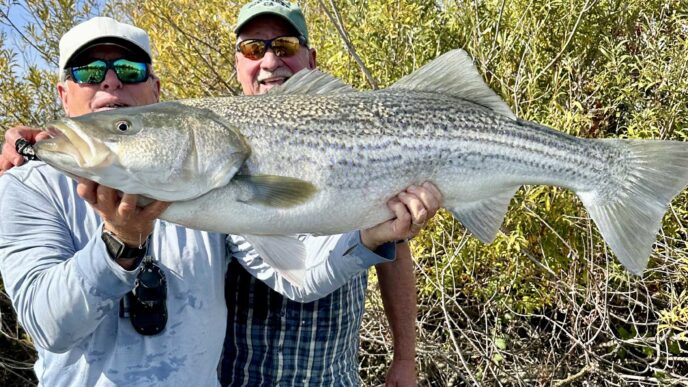In my late twenties and well into family life, the itch to take up the fly rod invaded my soul like a teenager experiencing his first crush. As a kid growing up on the east side of the Sierras, I hooked fish on the West Walker River and East Carson River with a spinning rod in one hand and a Shasta grape soda in the other. But this new desire to lay down flies was about more than just hooking fish. Maybe it signaled that I was growing up, or perhaps it was a revival of sorts—a spiritual ascension where I looked at the world through the eyes of my prey and wanted to outsmart trout at their own game. This urge was fueled by photo spreads I found in fishing magazines. My fingers rubbed the ink off those glossy pages. Ensconced in my “reading room” with the door locked—the same place where I first read Dances with Wolves and The One Year Bible—I now let the passion of fly fishing fill my soul.
I studied the photos of well-healed anglers, their suntanned arms gripping fly rods, their bodies poised in perfect synchronization as a yellow line arched over a river in a lasso of grace and balance. The essays told of big fish on bigger waters, sometimes with shaggy buffalo on the river bank, sometimes a stone’s throw away from snow piled high in winter’s blue shadows. Those articles took my imagination to mirrored reflections of wild grasses swaying against a cut bank, where the surface was broken only by the echoing wake of trout feeding just below. I felt an insatiable need for cold water on my thighs and to hear the sound of filament whipping the air.
The only thing standing between me and fishing with the buffalo was…money.
So how does a monetarily disadvantaged soul go about acquiring fly-fishing gear? This is the problem when you’re young, married, and raising two kids. In the 1990s, fly fishing was still considered a pastime for well-heeled sportsmen. I worked in a missile factory, where my daily attire consisted of foam earplugs, safety glasses, and steel-toed shoes. I was not the sort of wealthy prospect that fly rod manufacturers were targeting.
So I did the next best thing and shopped at a discount chain store. I’m talking about a store with a single letter prominently displayed in its name. A place where the sporting goods aisle consisted of a picked-over rack of bait-fishing rods, bottles of gun oil, and a stack of Thigh Masters. Buried under a pile of superhero-themed kiddie poles, I unearthed a forgotten eight-foot fiberglass fly rod and reel combo for forty-eight dollars and fifty cents—a small fortune for me in those days. By comparison, a week’s groceries for our family came to about ninety dollars. Buying the combo meant we weren’t eating for a few days. A reasonable trade-off, I concluded. Sacrifices were necessary.

Back at home, I went to my tackle box, dug out a spool of six-pound line, and clipped off ten feet. I tied my improvised tippet to the fly line, and with a two-pack of royal coachmen in my pocket, I was in business.
The following Saturday, I managed to sneak out of the trailer before dawn and quietly motored down to a gas station for coffee and donuts. An all-night country channel blared while the pre-dawn light cast a jagged silhouette of the Sierras against the sky. I rattled along a dusty two-track and spooked mourning doves off their roosts on my way to a stretch of water I had fished many times in childhood. The water ran slow and smooth, sixty feet wide, and edged with willows. I picked out several disjointed shadows behind a midstream boulder. Amongst the shadows was a fish large enough to be mistaken for a chunk of moss caught in the eddy.
My brain went straight to aerodynamic trajectory calculations: How much acceleration of the fly line was needed to overcome time and altitude? How much drag was associated with fishing lines and dry flies? Would air density be a factor? This, I concluded, was indeed the sport of rocket scientists, attorneys, and brain surgeons. I was now counted among them, standing proudly among fishing’s elite.
On my feet, I wore pink, dollar-store flip-flops.
The near-freezing water made my feet glow white. I shivered in my shorts and tee shirt. Slung over one shoulder was a green creel, the kind with a twelve-inch ruler stenciled across the top (you know the one). Inside were a yellow nylon stringer, a rusty pocket knife, and a retired dish rag for grabbing fish: no forceps, no fly box, no tippet, no strike indicators.
The wind blew steadily down the canyon, but I ignored it. Fighting the wind was part of the challenge, I reassured myself. And with that, I worked my rod and forearm together as if the two were welded, playing out yards of line in the hope of gaining enough extra weight to overpower the wind. With every upstream cast, my line halted midair and drifted back on me. The two times my fly touched down on the water, it landed not more than ten feet away, the line corkscrewing like a roll of razor wire.
A half-hour later, I stumbled out of the river on feet that felt like frozen pegs. My wrist throbbed, my ego was bruised, and I had lost a royal coachman to the willows. Welcome to fly fishing, sucker.
Disgusted with life in general, I threw the rod in the truck and headed for home.
With the river in my rearview, I drove home feeling desperate to catch a fish—even a dumb fish—if only to mark a check on the wall. I needed to get closer. That was the key. Get close enough to beat the wind at its own game.
Get close to the fish. Get down to the fish.
“But how?” I asked aloud. “How the heck are you gonna get down to the—”
The sky overhead flashed with dry lightning, yet there were no clouds. My hand slipped from the steering wheel. Truck tires sizzled in roadside gravel. I hit the brakes, and when the dust settled, I had my answer.
The Army Surplus Store.
In a low-slung building that smelled of machine oil and mothballs, I scored the bottom half of a scuba wetsuit for a few bucks. If I couldn’t afford expensive neoprene waders, this would have to do. Black, skin-tight rubber trousers so stiff and inflexible that I had to turn them inside out and roll them up my legs to get them on. Once installed, I waddled like a penguin. I braced for the snickers from my fellow fisherman, but if it meant wading deeper into the cold water, it was worth it. The following Saturday, I drove out to a stretch of river closer to home. Satisfied that I was alone, I stripped down to my underwear. Balanced on one flip-flop, I wrestled the scuba pants on, one leg at a time, hoping to avoid being caught in another truck’s headlights.
On the river, I waded out where slick green moss covered the rocks. My flip-flops had as much traction as oil on cellophane. I managed to cast upstream into an arrowhead of riffles and land the fly somewhat convincingly on the surface. That gave me pause. What was this? A good cast? My coachman drifted by, riding high on the water. Anticipation made my forearms tingle.
The knowledge that I deprived my family of food, squeezed into scuba pants, and stood on the side of the road in my underwear all seemed worthwhile if I could snag a fish.
I cast upstream again, landing it gently on the surface. I was starting to get the rhythm, and—at least from a purely mechanical standpoint—I was fly fishing.
The strike happened quickly. Water jumped vertically for a fraction of a second. A strobe-like flash of a silvery trout danced beneath the surface. The fight telegraphed through the line and rod, up into my hand, sending tiny shockwaves into my soul.
Now, thirty-five years later, when I see sunlight on riffles or the glossy green camouflage of feeding trout, my mind relives the fly-fishing romance of that summer—and the spark from a magazine article that started it all.


